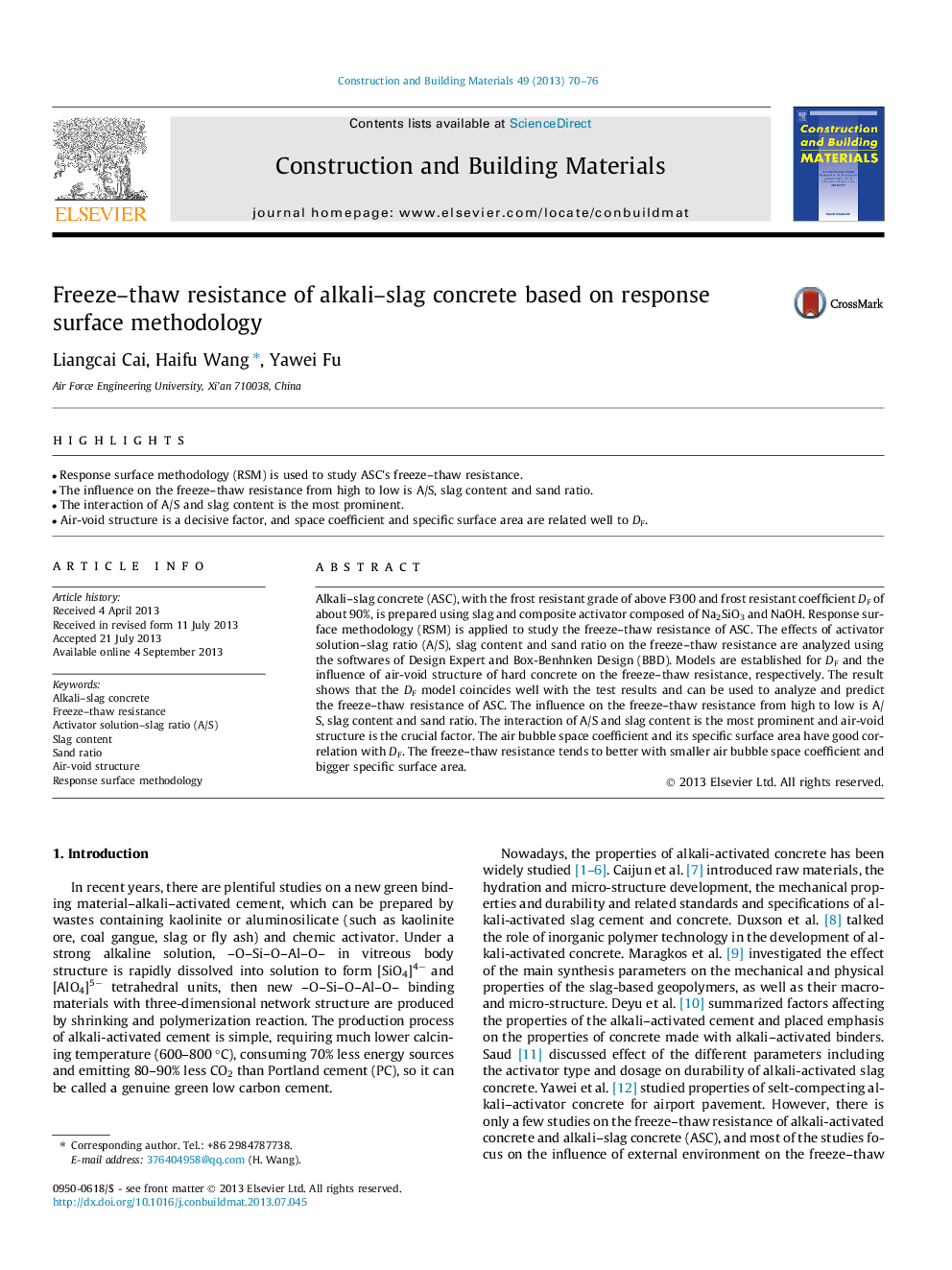| Article ID | Journal | Published Year | Pages | File Type |
|---|---|---|---|---|
| 6724693 | Construction and Building Materials | 2013 | 7 Pages |
Abstract
Alkali-slag concrete (ASC), with the frost resistant grade of above F300 and frost resistant coefficient DF of about 90%, is prepared using slag and composite activator composed of Na2SiO3 and NaOH. Response surface methodology (RSM) is applied to study the freeze-thaw resistance of ASC. The effects of activator solution-slag ratio (A/S), slag content and sand ratio on the freeze-thaw resistance are analyzed using the softwares of Design Expert and Box-Benhnken Design (BBD). Models are established for DF and the influence of air-void structure of hard concrete on the freeze-thaw resistance, respectively. The result shows that the DF model coincides well with the test results and can be used to analyze and predict the freeze-thaw resistance of ASC. The influence on the freeze-thaw resistance from high to low is A/S, slag content and sand ratio. The interaction of A/S and slag content is the most prominent and air-void structure is the crucial factor. The air bubble space coefficient and its specific surface area have good correlation with DF. The freeze-thaw resistance tends to better with smaller air bubble space coefficient and bigger specific surface area.
Related Topics
Physical Sciences and Engineering
Engineering
Civil and Structural Engineering
Authors
Liangcai Cai, Haifu Wang, Yawei Fu,
